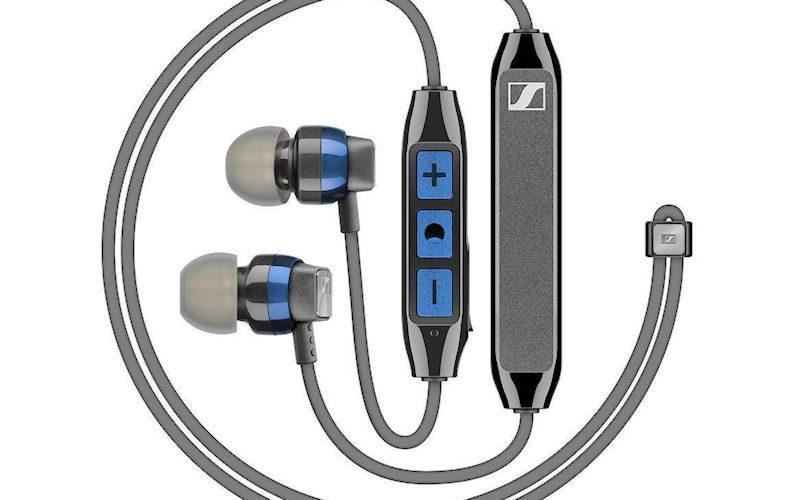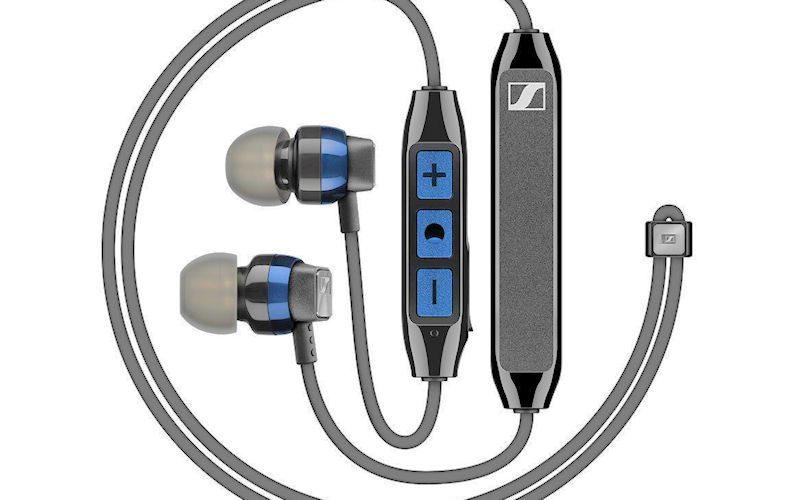

Brian Kahn is the longest tenured writer on staff at HomeTheaterReview.com. His specialties include everything from speakers to whole-home audio systems to high-end audiophile and home theater gear, as well as room acoustics. By day, Brian is a partner at a West Los Angeles law firm.
As with many of you, I find myself on many long calls on my cell phone during the day and prefer to use wireless in-ear monitors instead of wired or larger headphones. I also find myself on a lot of relatively short flights for work and find small, wireless headphones to be well-suited for listening to music on these types of trips, as they can save space by doing double duty for phone and music use. Sennheiser's CX 6.00BT caught my eye for use in this dual-purpose role.
At $99, these are relatively inexpensive headphones and the least expensive Sennheiser wireless in-ear monitor. Despite their competitive price point, the CX 6.00BT does not skimp on features or technology. For connectivity, they are one of the first headphones to feature Qualcomm's aptX Low Latency codec, which will be particularly beneficial with keeping audio in sync with video displays. Unfortunately, I did not have any easy access to aptX Low Latency sources to test out this new technology with, but on paper it seems compelling.
The CX 6.00BT is fairly traditional in design: black plastic with silver and dark blue highlights. The stems for the ear tips are angled back slightly, which makes it easy to determine which side is which. Sennheiser ships the CX 6.00BT with round rubber tips in four different sizes. If you prefer foam style tips, Comply makes a tip for this model. The CX 6.00BT, tips, and short charging cable all come packaged in a square, hard plastic case.
The earpieces are connected to each other with a wire that has small in-line modules a couple of inches from each earpiece. The right-hand module features control buttons (up, down, and function), microphone, and a micro-USB charging port hidden behind a rubber flap. A slider on the wire provides length adjustment.
 The CX 6.00BT's Bluetooth 4.2 connectivity provides support for AAC, aptX, and, as noted above, aptX Low Latency. I know some will lament the lack of Bluetooth 5.0, but I did not have any connectivity problems. I easily connected to my iPhone 7, Microsoft Surface Pro, and a few other devices, and the CX 6.00BT stayed connected. The voice feedback of the headphones also makes it simple to track status rather than having to recall the meaning of the various tones used by many other Bluetooth devices. Did the four ascending tones mean that I just connected or does it mean I maxed out the volume? No possibility of that confusion with the Sennheisers.
The CX 6.00BT's Bluetooth 4.2 connectivity provides support for AAC, aptX, and, as noted above, aptX Low Latency. I know some will lament the lack of Bluetooth 5.0, but I did not have any connectivity problems. I easily connected to my iPhone 7, Microsoft Surface Pro, and a few other devices, and the CX 6.00BT stayed connected. The voice feedback of the headphones also makes it simple to track status rather than having to recall the meaning of the various tones used by many other Bluetooth devices. Did the four ascending tones mean that I just connected or does it mean I maxed out the volume? No possibility of that confusion with the Sennheisers.
Listening Impressions
I listened to Ariana Grande's "God is a Woman" from the album Sweetener (Republic Records, Tidal) both through Sennheiser's CapTune App and directly through the Tidal app. There is no doubt that navigating the Tidal app is faster and more intuitive, but the CapTune app has a built in EQ function, which I found helpful in taming the CX 6.00BT's highs.
Without the EQ engaged there was some harshness in the synthesized highs. The EQ allowed me to turn down the highs a touch, which let me preserve detail but greatly reduce harshness. Grande's vocals were clear and natural, but lacked the weight or heft that you hear when listening to full sized headphones. Lastly, the bass was slightly rolled off with the provided ear tips, which I found to be most comfortable.
Substituting Comply tips or the slightly less comfortable larger tips that came with the Sennheisers definitely improved bass in my ears. Remember, ear fit is a personal matter and varies per user, so it's good to test out a number of good ear tips to get the best fit for you.
The opening vocals of Imagine Dragons' "Whatever it Takes" from their album Evolve (Interscope, Tidal) were reproduced without the sibilance I heard on Ariana Grande's vocals. The low bass was decent, but not as strong as with the Ultimate Ear Reference Remastered or Etymotics ER4, which I have been using when a wired connection is not a problem. The soundstage on this track was significantly larger with the Sennheisers, and much closer to my reference headphones than the Apple-supplied IEMs.
In addition to listening to music, I connected the Sennheisers to both an iPad and iPhone at the same time so I could watch videos on my iPad but also answer any calls I might receive. The Sennheisers switched back and forth without any issues and there were no problems with intelligibility on either end.
High Points
Low Points
 The sound is ever-so-slightly bright on the high end, which could get fatiguing over longer listening sessions.
The sound is ever-so-slightly bright on the high end, which could get fatiguing over longer listening sessions.Competition and Comparison
Sennheiser's own HD1 ($199) has slightly larger earpieces, but is otherwise similar. My limited listening experience with the HD1 is that it has a fuller midrange but the earpieces are a bit larger and heavier. They also have magnetic backed earpieces that allow you to secure them around your neck when you are not listening.
The RHA MA750 ($169) (reviewed here) have a bulkier neckband design but much longer battery life of 14 hours.
Wireless headphones are hitting the market with great frequency, be sure to keep an eye on HomeTheaterReview.com's headphone page to keep up to date.
Conclusion
The Sennheiser CX 6.00BT is a definite step up in sound quality from the headphones that come with any portable device I have ever purchased. The improved sound quality and comfort make the CX 6.00BT easy to recommend. Their light weight and dual device functionality made them my go to IEM when travelling. If they were going to be my only earphone, I would opt for the larger HD1, but for on the road use, the Sennheiser CX 6.00BT is hard to beat as a travelling companion.